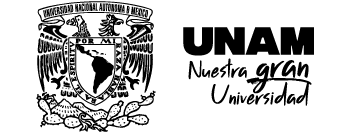Versiones de Daniel Saldaña París.
Mamá y la niña salen al jardín.
Las ondas sonoras son una valla
lasciva tras las orejas, tiran del pelo
apenas, como una liga en una apretada
cola de caballo, hacia la domesticidad
donde ocurre el dominio. Mamá dice:
la vamos a pasar increíble,
y la niña ve palacios cristalinos,
cuentos de hadas glaciales que se sobreponen
al jardín.
Este espacio, que es el jardín,
alterna entre un frente y un atrás.
Cuando es el frente hay dos
árboles caducifolios de tamaño mediano—
entre rojo y polvo,
y frente a ellos una vasta explanada.
Pero, cuando es la parte de atrás, hay una reja
y parece un jardín de eventos,
en general con pasto verde
y vecinos que abrigan rencores
o sienten curiosidad. Ninguno de los dos espacios
parece adecuado a esta narrativa,
pero la memoria es voluble.
(Recuero los regaños por asuntos del lenguaje.
Desde luego, la diferencia entre
luz y cielo es un motivo.
La pronunciación
una leve duda de similitudes.
Cuando no se articula la diferencia
el enojo rutila en el rostro de uno de los padres.
Luz se traduce en iluminación,
la cualidad y condición de lo que esplende.
Cielo es celestial, paraíso si se quiere.
La diferencia entre
página y papel es un motivo más.
Y el desliz gramatical
que va del verbo al sustantivo
ayuda.) Mamá y la niña
evitan el interior de la casa,
o más bien mamá impone
esta evasión, pues piensa que el sonido
del hermano siendo castigado
alterará a la niña,
sin saber que ese sonido
la deleita, o quizá no todavía,
no sabe que la deleita,
pero llegará a hacerlo,
un giro de lo inconsciente a lo consciente.
Mum and the kid go into the garden.
Sound waves are a fence
leering behind the ears, pulling the hair
just slightly like an elastic on a tight
ponytail, back to domesticity
where dominance occurs. Mum says,
we are going to have such a grand time,
so the kid sees crystalline palaces,
glacial fairy tales superimposed
upon the yard.
This space, which is the yard,
alternates between front and back.
When it is the front, there are two
moderately sized deciduous trees—
between red and dust,
and before them a vast expanse.
But when it is the back, it is fenced
in and resembles a garden party,
generally green with a lawn
and neighbours who harbour grudges
or are curious. Neither space
seems right for this narrative,
but memory is flippant.
(Remember being scolded for language.
Definitively, the difference between
light and sky is a motif.
Pronunciation
a slight hesitation of similarity.
When not articulating the difference,
anger wavers across the face of a parent.
Light translates to illumination,
the quality and condition of shining.
Sky is celestial, heaven if you will.
The difference between
page and paper is another motif.
And the grammatical slide
charging from the verb to the noun
for help.) Mum and the kid
are avoiding the inside of the house,
or rather mum is imposing
this avoidance, thinking that the sound
of her brother being punished
would distress the kid,
not knowing that she relishes
this sound, or doesn’t relish it yet,
doesn’t know that she relishes it,
but will come to relish it,
unconscious to conscious shift.
La elasticidad de crear
va de la mano con la violencia.
Plegar la energía del interior
al exterior, manejar
la fuente para suscitar imágenes.
Concatenar el jardín,
injertar agua en la maleza, en la luz
y hacer fotosíntesis del ego
hasta que exuden de la cara los nutrientes,
y las manos y la piel rezumen
el acto de hacer algo.
La violencia no se limita a la creación
o al producto de la creación,
sino que envuelve
la capacidad misma de crear.
Dictar la ley del individuo.
Desatar una oleada que es, al mismo tiempo,
dolor y no dolor,
un exquisito kitsch,
el suntuoso meneo
de hallar lo brutal y conservarlo.
Hacer es una modulación tan vasta
que elonga, envuelve, contiene
y aporta el cebo para fantasear
con algo novedoso. El arte renueva
su expolio y dirige su fijeza.
Esta no es una descripción banal del dolor.
Ni la tendencia a lastimar
realmente, mediante confrontación y asedio.
Ni el dolor opresivo
que elimina la posibilidad de todo lo demás,
que tunde trivialmente la armonía
y finge razón en nombre de un
autocontrol precariamente didáctico.
No. La suave decadencia de sentir
el cuerpo entero estremecerse al ritmo,
un temblor que disminuye
incomodidad que purga.
El dolor es una eminencia, mecánico esplendor original.
(Perdón: la plegaria deviene erótica).
The elasticity of creating
goes hand-in-hand with violence.
Creasing energy from inside-
outside, managing
the source to bring forth images.
Concatenate the garden,
graft water to greenery to light,
and photosynthesize the ego
till nutrients seep through the face,
and hands and skin leak
in the act of making.
Violence isn’t limited to creation,
or the product of creation,
but is wrapped up
in the ability to create at all.
To lay down the law of self.
To flog a rippling which is at once
pain and not pain,
kitsch exquisite,
truly the rich whisk
of finding brutality and keeping it.
To make is a modulation so great
it elongates, warps, contains,
and supplies infinite fodder to fantasize
a newness. Art renews
its plunder and directs its stillness.
This isn’t a banal description of pain.
Not the tendency to actually
hurt in a way that confronts and blocks.
Not the oppressive pain
which removes the possibility of all else,
hammers its harmony tritely,
feigns reason in the name
of self-control, brittlely didactic.
No. The soft decadence of feeling
the whole body quiver in tempo,
throbbing reduction
discomfort purgation.
Pain is an eminence, rote original splendour.
(Sorry, prayer becomes erotica.)
Es hora de volver a casa, dice mamá.
Planta sus manos sobre sus rodillas,
una lastimosa pesadumbre
se forma en el centro de su tarde.
Un desenlace que contrasta
el adentro y el afuera
como un deseo que se oxida.
Desmonta el caballete,
otro ritual constante, constantemente
hace y deshace la maternidad.
Enjuagar los pinceles con cuidado
bajo el agua de la llave, envolver los tubos
de pintura en una sábana de lino,
ordenar las cosas y ordenar a la niña
que ordene también las suyas.
La presión del dedo
en el tubo de pintura, purgando,
el contacto que esparce el color
por la paleta con el leve placer del uso.
Todo el pesado tacto consignado a la vida.
Los sistemas inician su propia catarsis,
liberan fricción en forma de paz,
una prosaica negación como conocimiento.
Su disidencia de la distancia
fractura materna
maduramente vinculada
a María.
Time to go back in, mum says.
She plants her hands on her knees,
a pitiful heaviness
forming at the core of her afternoon.
Denouement contrasting
inside and outside of the home
as oxidizing desire.
Taking apart the easel,
another ritual constant, constantly
making and unmaking motherhood.
Cleaning the paintbrushes properly
beneath the faucet, wrapping tubes
of paint in a linen sheet,
ordering things and ordering the kid
to order her things too.
The finger pressure placed on
tubes of paint, purging,
touch lapping up colour
onto the palette with the faint pleasure of use.
All the heavy tactility consigned to living.
Systems launch their own catharsis,
release friction as peace,
prosaic denial as knowledge.
Her dissidence of distance
maternal fracture
maturely linking in
Maria.
* Estos poemas forman parte de Hell Light Flesh y se publican con autorización de Anstruther Books.
Autor
Klara du Plessis
/ Es una poeta canadiense y sudafricana que escribe en inglés y en afrikáans. Ha publicado la plaquette Wax Lyrical (2015) y los libros Ekke (Premio Pat Lowther de Poesía, 2018) y Hell Light Flesh (2020). Escribe regularmente en medios como The Montreal Review of Books y Harriet, el blog de la Poetry Foundation.


